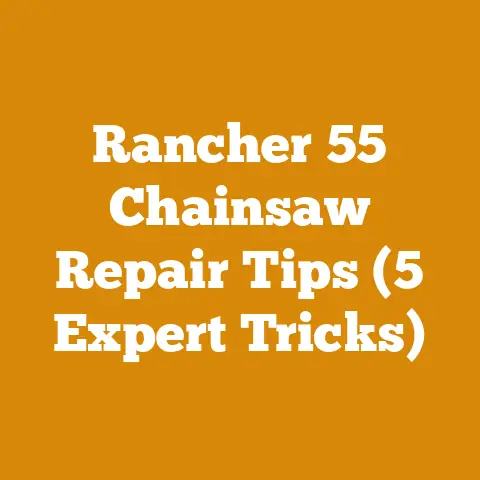Root Fertilization Techniques (Deep Injection Tips for Tree Care)
Root Fertilization: Deep Injection Techniques for Thriving Trees – A Cost-Conscious Guide
As a seasoned woodworker and occasional arborist (a fancy term for someone who really loves trees!), I’ve seen firsthand how a little TLC, especially at the root level, can make all the difference in a tree’s health and longevity. We often focus on pruning or pest control, but neglecting the roots is like ignoring the foundation of your house. They are the unsung heroes, working tirelessly to absorb water and nutrients.
The problem is, urban soils are often compacted, nutrient-poor, and generally unfriendly to tree roots. Surface fertilization can help, but deep root fertilization, specifically using injection techniques, gets the good stuff right where it’s needed most. That’s the solution. But how much does it actually cost? And is it worth it? This article will delve into the world of deep root fertilization, exploring the techniques, the science, and most importantly, the costs involved, so you can make informed decisions about your tree care budget. Let’s get started!
Understanding Deep Root Fertilization
Deep root fertilization involves injecting liquid fertilizer directly into the soil around a tree’s root zone. This method bypasses the surface layer, which can be compacted or depleted of nutrients, and delivers the fertilizer directly to the feeder roots. This is where the magic happens.
Why Deep Root Fertilization?
- Targeted Nutrient Delivery: Fertilizer goes straight to the roots, maximizing absorption and minimizing waste.
- Improved Soil Aeration: The injection process helps break up compacted soil, allowing for better air and water penetration. Think of it as giving your tree roots a breath of fresh air.
- Enhanced Root Growth: Promotes a stronger, healthier root system, making the tree more resilient to stress, disease, and pests.
- Increased Tree Vigor: Healthier roots lead to a healthier tree overall, with improved foliage, flowering, and fruit production.
- Corrects Nutrient Deficiencies: Addresses specific nutrient deficiencies identified through soil testing or visual symptoms.
Deep Root Fertilization Techniques: The Injection Process
The most common method involves using a specialized injection tool with a long probe that is inserted into the soil. Fertilizer is then injected under pressure, typically at a depth of 8-12 inches, depending on the tree’s size and root depth. The injection points are spaced evenly around the tree’s drip line (the outermost edge of the tree’s canopy).
I once witnessed a crew fertilizing a massive oak tree in a local park. They used a grid pattern, injecting fertilizer every few feet. It was fascinating to watch, and the tree’s response the following spring was incredible – vibrant green leaves and an overall healthier appearance.
Cost Factors: Breaking Down the Price of Deep Root Fertilization
Now, let’s get down to brass tacks: the cost. Deep root fertilization isn’t free, and the price can vary significantly depending on several factors. Understanding these factors is crucial for accurate budgeting. I remember being shocked at the initial quotes I received when I first started researching this for my own property. It was only after I dug deeper (pun intended!) that I understood where the costs were coming from.
1. Tree Size and Species
This is perhaps the biggest driver of cost. Larger trees require more fertilizer and more injection points, naturally increasing the labor and material costs. Different tree species also have different nutrient requirements, which can affect the type and amount of fertilizer used.
- Small Trees (under 10 feet): These typically require less fertilizer and fewer injection points, resulting in lower costs.
- Medium Trees (10-30 feet): The cost increases proportionally with size, as more fertilizer and labor are needed.
- Large Trees (over 30 feet): These require the most fertilizer and labor, making them the most expensive to fertilize.
For example, fertilizing a small crabapple tree might cost between \$75 and \$150, while fertilizing a large maple tree could cost \$200 to \$500 or more.
Data Point: A study by the International Society of Arboriculture (ISA) found a strong correlation between tree diameter at breast height (DBH) and the cost of fertilization services. Trees with a DBH of 20 inches or greater typically incurred costs 2-3 times higher than trees with a DBH of less than 10 inches.
2. Fertilizer Type and Quantity
The type of fertilizer used also impacts the cost. Different fertilizers have different nutrient compositions and release rates. Slow-release fertilizers, while often more expensive upfront, can provide long-term benefits and reduce the need for frequent applications.
- Liquid Fertilizers: These are typically less expensive but may require more frequent applications.
- Slow-Release Fertilizers: These provide a sustained release of nutrients over a longer period, reducing the need for frequent applications. These are often more expensive but can be more cost-effective in the long run.
- Organic Fertilizers: These are derived from natural sources and can be more environmentally friendly, but they may also be more expensive than synthetic fertilizers.
The quantity of fertilizer needed depends on the tree’s size, species, and nutrient requirements. A soil test can help determine the specific nutrient deficiencies and the appropriate fertilizer formulation.
Data Point: According to a survey of arborists conducted by Tree Care Industry Magazine, the average cost of fertilizer materials for deep root fertilization ranges from \$10 to \$30 per tree, depending on the type and quantity used.
3. Labor Costs
Labor is a significant component of the overall cost. The time required to fertilize a tree depends on its size, the complexity of the job, and the efficiency of the crew. Labor costs typically include:
- Travel Time: The time it takes the crew to travel to and from the job site.
- Setup Time: The time it takes to set up the equipment and prepare the site.
- Injection Time: The time it takes to inject the fertilizer into the soil.
- Cleanup Time: The time it takes to clean up the site and pack up the equipment.
Labor rates vary depending on the location and the experience of the crew. In some areas, labor rates can be as high as \$100 per hour or more.
Data Point: The hourly rate for certified arborists typically ranges from \$75 to \$150, according to data from the American Society of Consulting Arborists (ASCA).
4. Site Accessibility
If the tree is difficult to access, the cost will likely increase. Obstacles such as fences, buildings, or steep slopes can make it more challenging to maneuver the equipment and inject the fertilizer.
- Easy Access: Trees that are easily accessible will typically be less expensive to fertilize.
- Difficult Access: Trees that are located in hard-to-reach areas will require more time and effort, increasing the cost.
I once had to fertilize a tree that was located behind a retaining wall. It required a lot of extra effort and time to get the equipment into place, which significantly increased the cost.
5. Soil Testing
A soil test is highly recommended before deep root fertilization to determine the specific nutrient deficiencies. This helps ensure that the correct fertilizer formulation is used and avoids over-fertilization, which can be harmful to the tree.
Data Point: Many state universities offer soil testing services at a reduced cost. Contact your local agricultural extension office for more information.
6. Location
Geographic location plays a role in the overall cost due to variations in labor rates, fertilizer prices, and local regulations. Urban areas with higher living costs tend to have higher prices for tree care services.
- Urban Areas: These typically have higher labor rates and fertilizer prices, resulting in higher overall costs.
- Rural Areas: These typically have lower labor rates and fertilizer prices, resulting in lower overall costs.
I’ve noticed that the cost of tree care services in my area (a suburban area near a major city) is significantly higher than in more rural areas just a few hours away.
7. Company Reputation and Experience
Established tree care companies with certified arborists and a proven track record often charge more than less experienced or unlicensed companies. However, the higher cost may be justified by the quality of service and the peace of mind that comes with knowing the job is being done correctly.
- Certified Arborists: These professionals have completed extensive training and passed certification exams, demonstrating their knowledge and expertise in tree care.
- Licensed Companies: These companies are licensed and insured, providing protection against liability in case of accidents or damage.
It’s always a good idea to get quotes from multiple companies and check their references before hiring them.
Cost Estimates: What to Expect
Based on the factors discussed above, here are some general cost estimates for deep root fertilization:
- Small Tree (under 10 feet): \$75 – \$150
- Medium Tree (10-30 feet): \$150 – \$300
- Large Tree (over 30 feet): \$300 – \$500+
These are just estimates, and the actual cost may vary depending on the specific circumstances. It’s always best to get a detailed quote from a qualified tree care company.
Case Study: A homeowner in my neighborhood recently hired a tree care company to fertilize a large oak tree in their yard. The company charged \$450 for the service, which included a soil test, fertilizer application, and cleanup. The homeowner was pleased with the results, noting a significant improvement in the tree’s health and vigor.
DIY Deep Root Fertilization: Is It Possible?
While it’s generally recommended to hire a professional for deep root fertilization, it is possible to do it yourself, especially for smaller trees. However, it’s important to proceed with caution and do your research to avoid damaging the tree or injuring yourself.
Tools and Materials
- Soil Probe or Injection Tool: You can purchase a soil probe or injection tool online or at a garden supply store.
- Liquid Fertilizer: Choose a fertilizer that is specifically formulated for trees.
- Watering Can or Sprayer: Use a watering can or sprayer to apply the fertilizer.
- Safety Glasses and Gloves: Protect your eyes and hands from the fertilizer.
Procedure
- Conduct a Soil Test: This is crucial to determine the specific nutrient deficiencies.
- Choose the Right Fertilizer: Select a fertilizer that is appropriate for the tree species and the soil conditions.
- Prepare the Fertilizer Solution: Mix the fertilizer with water according to the manufacturer’s instructions.
- Insert the Soil Probe: Insert the soil probe into the soil at a depth of 8-12 inches.
- Inject the Fertilizer: Inject the fertilizer solution into the soil, using a slow and steady pressure.
- Space the Injection Points: Space the injection points evenly around the tree’s drip line.
- Water the Area: After injecting the fertilizer, water the area thoroughly to help the fertilizer soak into the soil.
Cost Comparison: DIY vs. Professional
| Item | DIY Cost (Estimate) | Professional Cost (Estimate) |
|---|---|---|
| Soil Test | \$50 – \$150 | Included in Service |
| Fertilizer | \$20 – \$50 | Included in Service |
| Soil Probe/Injector | \$30 – \$100 | N/A |
| Labor | Your Time | Included in Service |
| Total (Small Tree) | \$100 – \$300 | \$75 – \$150 |
As you can see, the DIY route can actually be more expensive for smaller trees when you factor in the cost of tools and materials. For larger trees, the cost savings may be more significant, but the risk of improper application also increases.
Risks of DIY Deep Root Fertilization
- Improper Fertilizer Application: Applying too much or too little fertilizer can harm the tree.
- Root Damage: Inserting the soil probe too deep or too close to the trunk can damage the roots.
- Soil Compaction: Using heavy equipment can compact the soil, hindering root growth.
- Personal Injury: Handling fertilizer and using equipment can be hazardous.
Important Note: If you’re not comfortable with the risks involved, it’s always best to hire a professional.
Cost Optimization Tips: Saving Money on Deep Root Fertilization
Deep root fertilization can be an investment, but there are ways to optimize costs without sacrificing the health of your trees.
1. Get Multiple Quotes
Don’t settle for the first quote you receive. Get quotes from at least three different tree care companies to compare prices and services.
2. Schedule Off-Season
Tree care companies are often less busy during the off-season (typically late fall or early spring). You may be able to negotiate a lower price during these times.
3. Combine Services
Consider combining deep root fertilization with other tree care services, such as pruning or pest control. This can often result in a discounted rate.
4. Negotiate
Don’t be afraid to negotiate the price. Many tree care companies are willing to work with you to find a price that fits your budget.
5. Consider a Maintenance Plan
Some tree care companies offer maintenance plans that include regular fertilization and other services at a discounted rate.
6. Focus on High-Value Trees
If you have a limited budget, prioritize fertilizing the trees that are most valuable to you or that are showing signs of nutrient deficiency.
Personal Anecdote: I once negotiated a lower price for deep root fertilization by bundling it with a pruning service. The tree care company was happy to give me a discount because it allowed them to complete two jobs in one visit.
Long-Term Benefits and ROI
While deep root fertilization involves an upfront cost, it’s important to consider the long-term benefits and return on investment.
- Increased Tree Longevity: Healthy, well-nourished trees are more likely to live longer, providing shade, beauty, and environmental benefits for years to come.
- Improved Property Value: Healthy trees can increase property value by adding curb appeal and aesthetic value.
- Reduced Risk of Disease and Pests: Stronger, healthier trees are more resistant to disease and pests, reducing the need for costly treatments.
- Enhanced Carbon Sequestration: Trees play a vital role in absorbing carbon dioxide from the atmosphere. Healthier trees sequester more carbon, contributing to a healthier environment.
Data Point: Studies have shown that healthy trees can increase property value by as much as 10-20%.
Actionable Takeaways and Next Steps
Deep root fertilization can be a valuable investment in the health and longevity of your trees. By understanding the cost factors involved and following the tips outlined in this article, you can make informed decisions about your tree care budget and ensure that your trees receive the nutrients they need to thrive.
Here are some actionable takeaways and next steps:
- Assess Your Trees: Evaluate the health and vigor of your trees. Are they showing signs of nutrient deficiency?
- Conduct a Soil Test: Determine the specific nutrient deficiencies in your soil.
- Get Multiple Quotes: Contact at least three different tree care companies for quotes.
- Compare Prices and Services: Carefully compare the quotes and choose a company that offers the best value for your money.
- Schedule the Service: Schedule the deep root fertilization service during the off-season, if possible.
- Monitor the Results: Monitor the trees’ response to the fertilization and adjust your tree care plan accordingly.
By taking these steps, you can ensure that your trees receive the nutrients they need to thrive and provide you with years of enjoyment. Remember, a healthy tree is a happy tree, and a happy tree is a valuable asset to your property and the environment. Now, go forth and nourish those roots!






